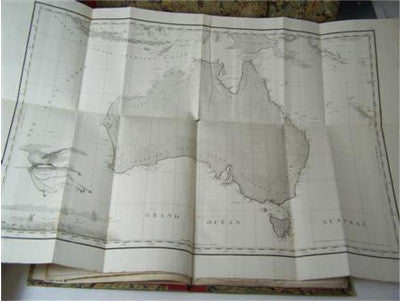Few things make you feel as if you're holding history in your hands more than a fine map or print.
This particular area of collectibles brings collectors' key responsibility to the fore: to preserve pieces of man's history.
For that reason, it is imperative that you take good care of your maps and manuscripts. This week, Paul Fraser Collectibles has compiled some tips to help you look after your historic collection...
 Nova Orbis Tabula, In Lucem Edita, drawn up in 1670 |
Handle them carefully
A lack of care when handling old manuscripts is the most prevalent cause of their damage, often resulting in wear and tears, worn-out images, creases and stains.
First things first: don't handle the paper with unwashed hands. Oils and salts in your perspiration may damage the paper and leave difficult stains.
Always handle your rare maps a manuscripts with two (clean) hands and never handle them by the edges, particularly if tears are already evident.
Prepare a clean viewing surface on which to enjoy your collection, with no liquids, foods, ink pens or other messy objects nearby.
And finally, avoid any use of paper clips, staples post-it notes or other potentially damaging stationery items.
Storage... keep them away from rodents
Don't store your collection in a space where there are extreme changes in temperature or humidity. Each of these can have a detrimental effect on the paper.
Ideally, your storage space should have a maintained humidity of 35-55 percent, with a temperature of 60-75 degrees. And avoid anywhere frequented by insects or rodents!
Maps and manuscripts should generally be stored flat, either in a shallow drawer or acid-free box. Here, each piece should be stored in a folder or sleeve made from 100% acid-free paper.
If the artefact is too large to store flat, then carefully roll it into a large diameter tube. Again, the tube should be constructed from acid-free materials, or protected with Mylar.
 Louise Freycinet's 'Voyages de découvertes aux terres australes', |
Display them as art, keep them safe
Keep your maps and manuscripts away from strong direct or reflected sunlight, as this will fade the colours and worsen the deterioration of the paper.
Fluorescent lights are also harmful, and UV filters should be used wherever possible.
Don't display your collection in spaces prone to damp - say, a bathroom or basement or outside surface - as excess humidity will also damage the paper.
Framing rule #1: employ an expert
To frame your maps or manuscripts, it is better to employ someone who is trained in proper framing techniques.
Proper framing should be superficially artistic - after all, your collection is supposed to be enjoyed! - but it is most important that it protects your collectibles.
The thing is, many past manufactured frames contain materials which can damage maps or manuscripts. Any work that you have purchased within a frame should be removed and inspected.
 Jodocus Hondius Jr's map of Virginia, updated by Willem Blaeu, auctioned by PBA Galleries in January |
Be sure that the frame is sealed, and that materials included in your frame are of the highest quality. Look out for features such as 100% acid free conservation mat boards, reversible-mounting adhesives, and ultraviolet light filtering glazing.
Regularly inspect your collection
The frame of your map or manuscript should be periodically inspected for any problems which can damage the artefact.
Make sure that the dust cover is intact, and that the bumpers and hanging mechanisms of the frame are secure. Check for signs of mildew and insects, and fading or yellowing of the paper.
Restoration: it's really a professional's job
Untreated problems related to damage or deterioration can cost you hundreds in restoration costs later on - unless you tackled the problems before they become a serious issue.
Contact a qualified paper conservator immediately if you notice anything.
Small defects can often be treated easily at relatively little cost. Again, it is better to leave the job of repair and restoration to an expert.
Amateur attempts to repair historic maps and manuscripts can often worsen the problem and result in further costly restoration. Tears which have extended into the printed areas of the paper, for example, are best looked-at by a conservator.
Having said that, there are problems which can be remedied by a cautious - and informed! - collector...
For instance, surface soil or pencil marks can be cleaned with a soft eraser, dry cleaning pad or a soft brush - although never try to clean a printed surface, and certainly never attempt to clean your manuscript with solvents.
Another important maxim to remember is: over-cleaning will do more harm than good, and probably more damage to your manuscripts than the dirt itself.
Finally, special adhesive tapes can be used to repair tiny marginal folds and tears - so never resort to common pressure-sensitive sellotape because the adhesive will yellow or stain the paper.
Paul Fraser.
PS. Get all the latest from the collecting world by signing up to my free weekly newsletter.






